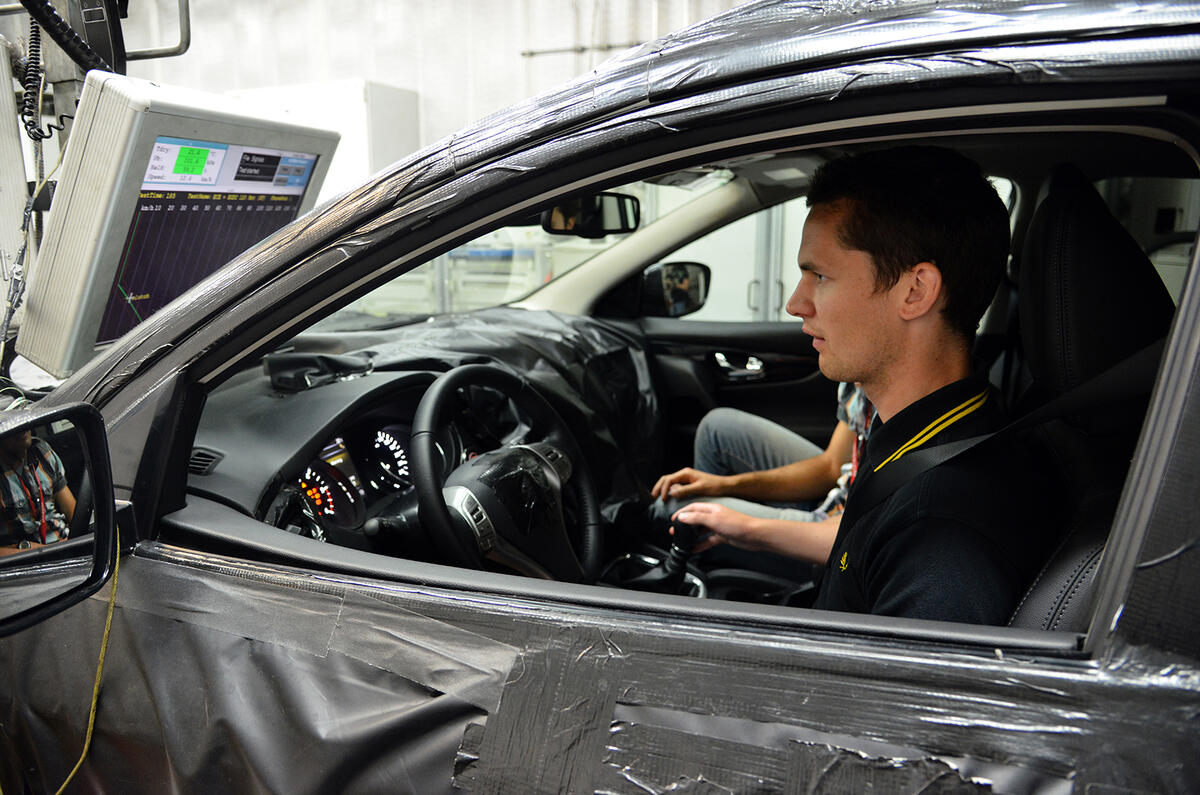In July 2013 I was in the bowels of Nissan Europe’s Barcelona technical centre doing something rather innocuous. Or so I thought.
I was doing some early reporting under a long-lead embargo on the development of the second-generation Nissan Qashqai, for an article that wouldn’t be published until the following April.
As part of a whistle-stop tour of the various facilities and departments involved in the Qashqai’s development, the engineering whizzes took us into a chamber where they set the official economy and CO2 figures for their cars.
From the group of us visiting the facility, they wanted a volunteer to have a go at part of the test. My hand shot up the fastest.
So I have played a hands-on role in one of the infamous official economy tests. Here’s what happens.
Before the engine even reaches the car to set the official figure, it is first fully tested, calibrated and optimised for economy and CO2 on various test benches and in lab conditions. At this point, it’s ready to go in the car.
The cars used are proper models rather than anything trick, although the Qashqai I was in was covered in camouflage wrapping because it had yet to be revealed to the world.
The test, which is called the New European Driving Cycle (NEDC), happens on a rolling road inside the lab that monitors the speed, weight and resistance. Hooked up to the exhaust pipe is all the equipment to monitor the emissions. The test is done from cold and the lab usually has an ambient temperature in the mid-20s.
Those ‘driving’ it are real off-the-shelf humans, preferably ones with a feather-like touch of the controls and who hadn’t gone back for seconds in the canteen at breakfast.
The NEDC test includes four urban phases and one extra urban one. It is controlled and is always the same, with certain speeds having to be hit along the way, certain gearshifts made at precise moments, lots of coming to a halt and orders having to be followed on how long the acceleration and deceleration phases take.









Join the debate
Add your comment
Tesla Cheating too
They won't admit any wrong doing but see it as a misunderstanding. On their site they have changed it so now you don't see a total hp number but each motors with it's hp numbers separately. It still doesn't say that you only can get 550 hp no matter how much hp those engines can produce. Even more strange/funny is that many Tesla owners/fans are going to any length on different sites to defend Tesla and also call it an honest mistake or that it doesn't matter, the car is still fast :)
You wouldn't even need to
No wonder the official figures have no bearing on reality.